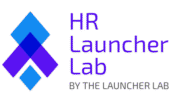
Hiring new talent is exciting, but let’s be real—it’s also incredibly challenging, especially when you’re a small business or a solo HR practitioner without extensive resources. You’ve likely felt the stress of bringing someone on board, only to realize they don’t have the clarity they need to succeed. It’s frustrating, it wastes time, and it’s costly. Every hire is a significant investment, and without a clear plan, that investment can quickly feel like a liability rather than an asset.
So, how do you prevent new hires from feeling lost or disengaged and instead help them hit the ground running? Let’s dive into how to set effective goals and create a powerful 90-day onboarding roadmap that truly works for small businesses.
- Why Setting Clear Goals Matters for Small Businesses
- Step 1: Set Clear, Simple Goals—Immediately
- Step 2: Use the Right Goal Framework: SMART vs. PACT
- Step 3: Craft a 90-Day Roadmap for Maximum Impact
- Step 4: Constant Feedback is Key—Here’s How
- Step 5: Leverage Tools That Save You Time
- Read More about Onboarding
Disclaimer #
The information on this site is meant for general informational purposes only and should not be considered legal advice. Employment laws and requirements differ by location and industry, so it’s essential to consult a licensed attorney to ensure your business complies with relevant regulations. No visitor should take or avoid action based solely on the content provided here. Always seek legal advice specific to your situation. While we strive to keep our information up to date, we make no guarantees about its accuracy or completeness.
This content may contain affiliate links, meaning we receive a commission if you decide to make a purchase through our links, at no cost to you.
For more details, refer to our Terms and Conditions.
